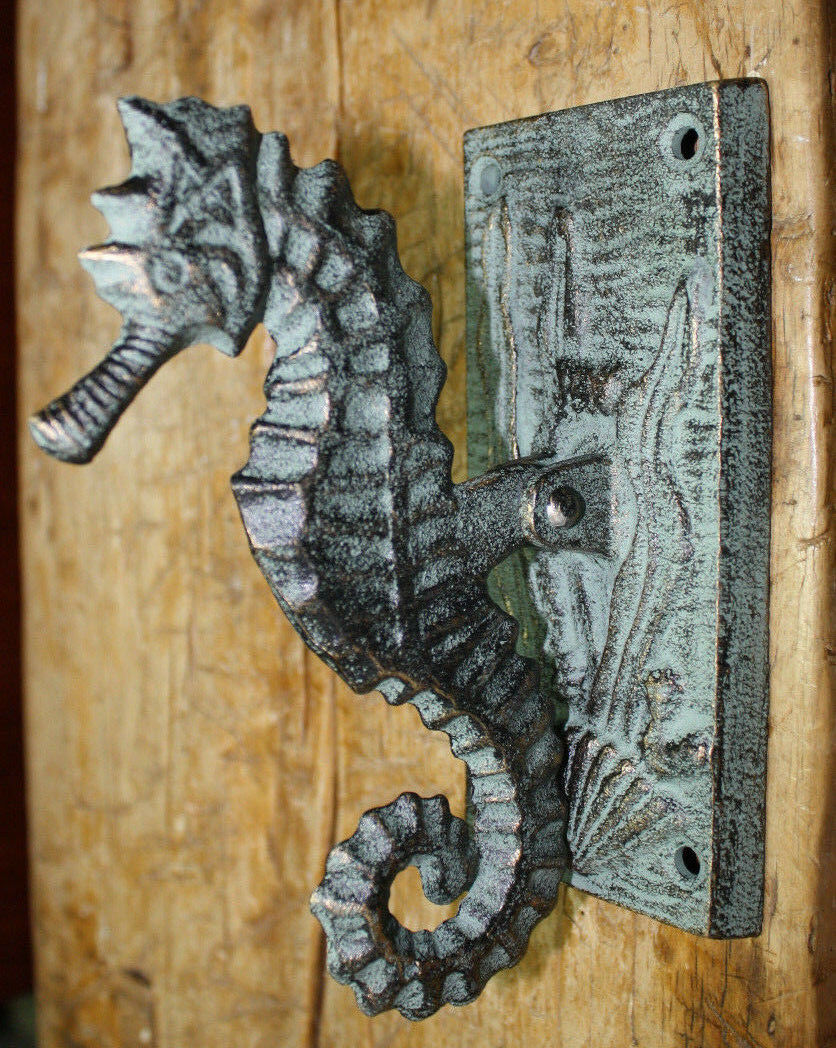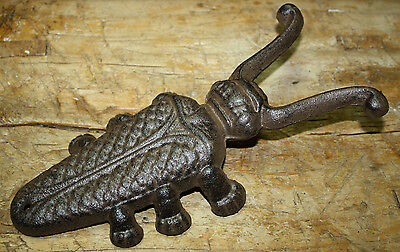-40%
Vintage NUTONE MID-CENTURY MODERN TWO CHIME ELECTRIC DOOR BELL > UNTESTED AS-IS
$ 5.27
- Description
- Size Guide
Description
Vintage NUTONE MID-CENTURY MODERN TWO CHIME ELECTRIC DOOR BELL > UNTESTED AS-IS///////////////////////////////////////////////////////////\\\\\\\\\\\\\\\\\\\\\\\\\\\\\
THIS MONTH, WE ARE PLEASED TO OFFER MANY FINE ANTIQUE AND COLLECTIBLE ARTIFACTS AND RARITIES FROM MISSISSIPPI AND LOUISIANA ESTATES AND PRIVATE COLLECTIONS
PLEASE
CHECK
OUR
OTHER
EBAY
LISTINGS
FOR
MORE
EXAMPLES
OF
EARLY
ANTIQUES
&
COLLECTIBLES
///////////////////////////////////////////////////////////\\\\\\\\\\\\\\\\\\\\\\\\\\\\\
DESCRIPTION
SOLD AS-IS ~ NOT TESTED FOR FUNCTIONALITY ~ NOT ELIGIBLE FOR RETURNS
~ ACQUIRED FROM A TEAR DOWN OF AN OLDER HOME ~
TWO GOLD BRASS PATINA METAL TUBES FLANK A CENTER CABINET COVER OF IVORY CAST COMPOSITE PLASTIC.
MEASURING 7 x 7" OVERALL, AROUND 3" DEEP WALL MOUNTED ~ WEIGHS -1- POUND -7- OUNCES.
STICKER READS ~
PART NO. 5764
NUTONE INC. ~ CIN'TI .27, OHIO, USA
CONDITION REPORT
> FUNCTIONALITY UNDETERMINED ~ SOLD AS SHOWN ~ NO RETURNS ~ VINTAGE CONDITION, BEST NOTED BY EXAMINING THE IMAGES OFFERED.
HISTORY OF NUTONE CHIMES
Nutone Chimes, Inc. , Cincinnati, Ohio
Founded in 1936 by J. Ralph Corbett (1897-1988) and Patricia Corbett (1912- )
Many references to the history of NuTone can be found in a cursory web search. That is undoubtedly because of the Corbett Foundation, a major philanthropic organization that has funneled in excess of 50 million dollars into arts related projects in Cincinnati. The details of the companys history however are overshadowed and presented in sketchy and often misleading form.
Born in December 1896 in Flushing, N.Y., Corbett was the son of a wine merchant. He attended Dwight Preparatory School, where he sang in the choir, and later was a scholarship student at New York Law School, working as an advertising agency mail clerk during the day while taking classes at night.
His first job as a lawyer was as private secretary to an attorney who assisted Clarence Darrow in the Scopes trial. To supplement his income, he began writing radio scripts, and by the mid-1920s had his own marketing and radio production agency. One of his clients, from 1932-37, was Cincinnati's WLW. While working here, Corbett and his wife decided to make Cincinnati their home.
At WLW, Corbett produced a number of radio series, including ''Famous Jury Trials'' and ''Life of Mary Southern,'' which ran for 10 years.
During the Depression, WLW founder Powel Crosley suggested that Corbett produce a show to ''buoy up courage.'' The result was ''Notes on Business,'' a show hosted by Corbett that dramatized business opportunities, inventions and other upbeat business news recited against a musical background.
After one broadcast, a Dayton man approached Corbett with his idea for a musical chime to replace then-popular doorbell buzzers. Corbett loaned him ,000, but the inventor went bust. In 1936 Corbett took over what was left of the operation and moved it to Cincinnati. He continued to operate his consulting agency but also founded, in partnership with wife, Patricia, a new company called NuTone Chimes Inc. The company employed only four people and operated in a one-room building downtown.
As his investment soared over ,000, Corbett realized that he had to narrow the wide price gap separating the chimes - which, under the Dayton man's plans, cost from .50 to 5 - and conventional door buzzers, which cost only about 25 cents. With help from an acoustics expert from the University of Cincinnati, a new line of chimes costing to .50 was produced by a workforce of four at a 600-square-foot factory. It did not move formally to a more extensive facility until 1940, when it opened manufacturing operations at Third Street and Eggleston Avenue.
By Pearl Harbor, NuTone had grown to more than 400 workers - one-fifth its size when Corbett sold the firm a quarter century later - and its sales had surpassed million. But the wartime conversion of his factory to anti-aircraft fuse production presented several problems: losing about one-fourth of his workers to military service, and searching for a product that could be made from non-essential materials to keep his sales staff occupied.
He solved the latter problem by manufacturing about 1.5 million hardboard mailboxes, and addressed the former by writing 50 letters weekly to NuTone workers in uniform in the hope that they would return after the war. More than three-quarters did.
NuTone would eventually become one of the nation's most recognizable product names, with its doorbells chiming in more than 50 million U.S. homes. The company also expanded into a wide range of other consumer products such as chiming Westminster clocks, intercoms, built-in stereos, electric ranges, kitchen exhaust fans and bathroom ceiling heaters - an idea inspired by the time Corbett bumped into his wall heater while shaving, burning two holes in his robe.
Through savvy marketing, NuTone products that started out as luxuries came to be seen by many Americans as household necessities - particularly in new homes. After initially selling his products in department stores, Corbett later concentrated on wholesalers who dealt with builders and contractors.
By 1967, when Nutone's annual sales had reached million, with 14 plants in the U.S. and Canada, Corbett sold the company for million to Scovill Manufacturing Co. of Connecticut.
The company changed hands again in 1998, as it was absorbed by Broan, and again by Nortek in 2000
The fact is that the "the Dayton Man" already had a company, probably founded in 1929 and had been making a line of fancy chimes for years when he met Corbett in 1934 or 1935. What is not at all clear is why he contacted Corbett. Possibly for financial support of his flagging company, or maybe for marketing help. Still seeking to uncover that story. In any case "the Dayton Man's" company continued on through 1939 regardless of how the NuTone story is told.
As for the suggestion of "invention" of musical chimes, given the solid evidence of patent records, neither NuTone, Corbett nor the Dayton Man were the original inventor of musical door chimes.
HISTORY OF THE MID-CENTURY MODERNISM STYLE & DESIGNER INFLUENCES
Contemporary interior design refers to whatever design trends are popular now. Modern is an actual style characterized by clean, spare, angular and gently curved lines, chromed metal elements, glass, molded wood and plastic furniture and geometric fabric patterns. The terms are used interchangeably by many ~ and even though the term "contemporary" refers to the style based on mid-term modern, their meanings are different. The term "contemporary" in reference to interior design and furniture began in the middle of the 20th century, and has been used since to refer to design trends of the current day, based on the original.
At the end of the first decade of the 21st century, contemporary design typically described furniture in the modern style made of wood, chrome, metal and glass, in rooms that often use industrial materials. The industrial component was not part of the original 1950s mid-century modern. Contemporary design is sleek and uncluttered, and relies on its clean lines and quality materials for its distinctive character, not on carving or ornate embelllishment. Sectionals and modular elements are frequently used.
Mid-century modern furniture was moderate in size. Contemporary design during the first decade of the 21st century expanded some in size. Colors popular at mid-century were oranges, turquoise, cream, browns and beiges. As time progressed, other colors have been added to the pallet--particularly bright, vibrant tones.
Mid-Century modern is an architectural, interior and product design form that generally describes mid-20th century developments in modern design, architecture, and urban development from roughly 1933 to 1965. The term, employed as a style descriptor as early as the mid-1950s, was reaffirmed in 1983 by Cara Greenberg in the title of her book, Mid-Century Modern: Furniture of the 1950s, celebrating the style which is now recognized by scholars and museums worldwide as a significant design movement.
Mid-century architecture was a further development of Frank Lloyd Wright's principles of organic architecture combined with many elements reflected in the International and Bauhaus movements - including the work of Gropius, Le Corbusier, and Mies van der Rohe. Mid-century modernism, however, was much more organic in form and less formal than the International Style. Scandinavian architects were very influential at this time, with a style characterized by clean simplicity and integration with nature. Like many of Wright's designs, Mid-Century architecture was frequently employed in residential structures with the goal of bringing modernism into America's post-war suburbs. This style emphasized creating structures with ample windows and open floor-plans with the intention of opening up interior spaces and bringing the outdoors in. Many Mid-century houses utilized then-groundbreaking post and beam architectural design that eliminated bulky support walls in favor of walls seemingly made of glass. Function was as important as form in Mid-Century designs, with an emphasis placed specifically on targeting the needs of the average American family. Examples of residential Mid-Century modern architecture are frequently referred to as the California Modern style.
In Europe the influence of Le Corbusier and the CIAM resulted in an architectural orthodoxy manifest across most parts of Post War Europe that was ultimatemately challenged by the radical agendas of the architectural wings of the avant-garde Situationist International, COBRA , as well as Archigram in London. A critical but sympathetic reappraisal of the internationalist oeuvre, inspired by Scandinavian Moderns such as Alvar Aalto, Sigurd Lewerentz and Arne Jacobsen and the late work of Le Corbusier himself was reinterpreted by groups such as Team X including structuralism(architecture) architects such as Aldo van Eyck, Ralph Erskine, Denys Lasdun, Jorn Utzon and the movement known in the UK as New Brutalism.
Pioneering builder and real estate developer Joseph Eichler was instrumental in bringing Mid-Century Modern architecture ("Eichler Homes") to subdivisions in the Los Angeles area and the San Francisco Bay region of California and select housing developments on the east coast. George Fred Keck, Henry P. Glass and Ludwig Mies van der Rohe created Mid-Century Modern residences in the Chicago area. Mies van der Rohe's Farnsworth House is extremely difficult to heat or cool, while Keck and Keck were pioneers in the incorporation of passive solar features in their houses to compensate for their large glass windows.
Scandinavian design was very influential at this time, with a style characterized by simplicity, democratic design and natural shapes. Glassware ~ Iittala - Finland, ceramics ~ Arabia - Finland, tableware ~ George Jensen - Denmark, lighting, and furniture were some of the genres products' were created in.
///////////////////////////////////////////////////////////\\\\\\\\\\\\\\\\\\\\\\\\\\\\\
P
LEASE USE THE EBAY "
CONTACT SELLER
" FUNCTION TO CONTACT US AND
RESOLVE ANY QUESTIONS BEFORE BIDDING
INTERNATIONAL SHIPPING AVAILABLE FOR SOME ITEMS VIA USPS PRIORITY MAIL INTERNATIONAL ~
NO FIRST CLASS INTERNATIONAL PARCEL
~ CONTACT US FOR A SHIPPING RATE QUOTE BEFORE BIDDING
<
WE
NEVER
CHARGE A HANDLING FEE ~ AND ALWAYS
COMBINE SHIPPING
ON MULTIPLE PURCHASES
>
















